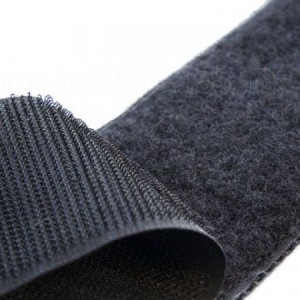 What do Velcro, barbed wire, and chainsaws have in common? They were all patterned after structures found in nature.
What do Velcro, barbed wire, and chainsaws have in common? They were all patterned after structures found in nature.
Velcro was invented in 1941 by Swiss engineer Georges de Mestral. After returning home from a hunting trip, he noticed a large amount of cockleburs stuck to his clothes and his dog’s fur. Out of curiosity, he stuck a few under a microscope and saw that each bur consisted of hundreds of little hooks that caught on anything with a loop, such as clothing or animal fur. He surmised that if he could duplicate the hooks and loops with other materials, he could bind them together in a similar fashion.
When ranchers first began raising cattle on the wide-open plains, they used the Osage orange as fencing material. But the thorny bush took a lot of time and effort to transplant and grow. Eventually, someone hit on the idea of fashioning wire fences patterned after the Osage’s sharp thorns. This innovation made it affordable to fence vast areas of land, and led to the practice of animal husbandry on a much larger scale.
Nature also provided the inspiration for the modern chainsaw. In 1946, a man chopping wood in Oregon noticed several timber beetle larvae chewing through the logs around him. A short while later, he developed a chain with interlocking links that mimicked the chewing action of their teeth. This led to the development of the first chainsaw that could cut with, or against, the grain of the wood.
These three innovative products have something else in common. They were developed using one of the most important parts of human intelligence — our ability to form patterns.
The human brain has an amazing capacity to take in large amounts of data, sift and analyze it, and then form patterns. In our caveman days, this kind of pattern recognition coupled with instant and consistent response was a good thing. It allowed us to quickly identify predators, remember the location of food and water sources, and engage in other activities that supported our survival.
Humans also excel at forming patterns and making connections because the subconscious mind likes closure. When faced with an incomplete picture, the brain works to complete the mental image by inferring the missing information. The brain works the same way on an unsolved problem or challenge; it loves to dive right in and get the job done. Our minds fill in shapes and patterns based on our expectations and assumptions.
Connections can be based on differences as well as similarities. For example, our minds easily connect chair and table, ham and eggs, brother and sister. To enhance your ability to see patterns and make connections, start looking for them in everyday things:
- Junk mail. Scan your mail before you throw it out. What new trends do you see in advertising and marketing? What new products and values catch your eye? Let your junk mail accumulate for a month and take note of what you see when you pause and go through it.
- Popular music. What are the trends in music? Is it getting louder or softer? More intimate or more intimidating? Is it more culturally diverse? Have the instruments changed? Do radio stations play more or less variety than five years ago?
- Bookstores. Are there any consistent topics among best-sellers? What about magazine covers? What values does popular culture display? Why are they portrayed as such?
- TV shows. What are the trends in prime-time television? What kinds of characters are portrayed on family shows now? Why are there plenty of shows about doctors, lawyers, and police, and so few about scientists, politicians, and engineers?
- TV commercials. What products or services do you see advertised the most? Are there new production techniques, or are old ones being revived? What time of day are the best commercials on? The worst? Who is the intended audience for a particular commercial?
Original ideas come from recognizing new connections between familiar things and transforming them into something new. So the next time you see a pattern — whether it comes from a beetle grub chewing through a log, or the pile of junk mail sitting on your countertop — pause for a moment and ask yourself, “How can I relate this to something I already know well?” You’ll be amazed at what you can come up with!






